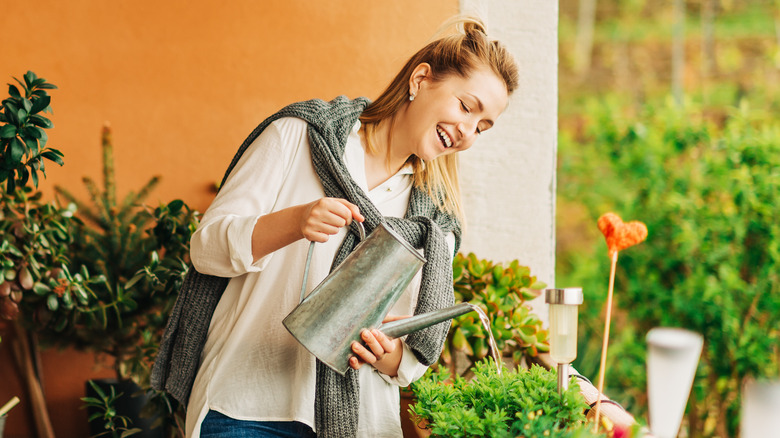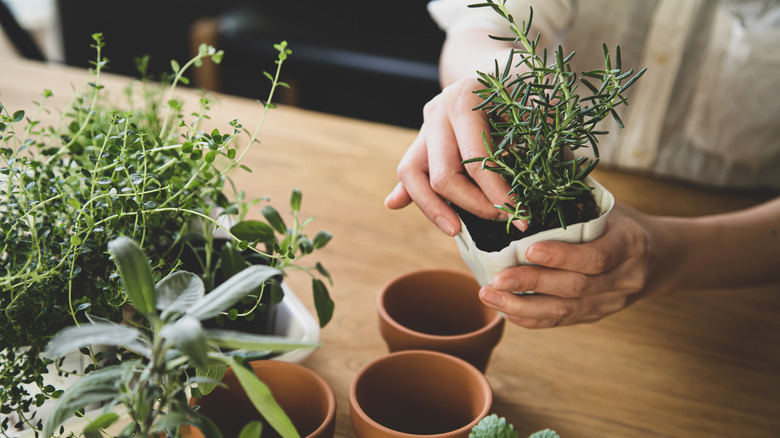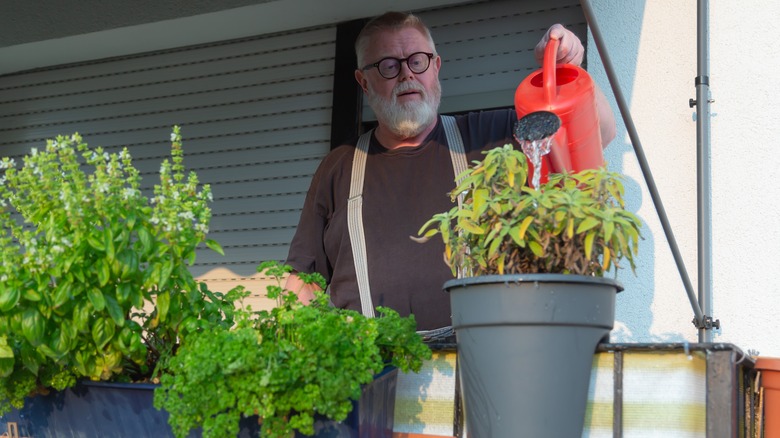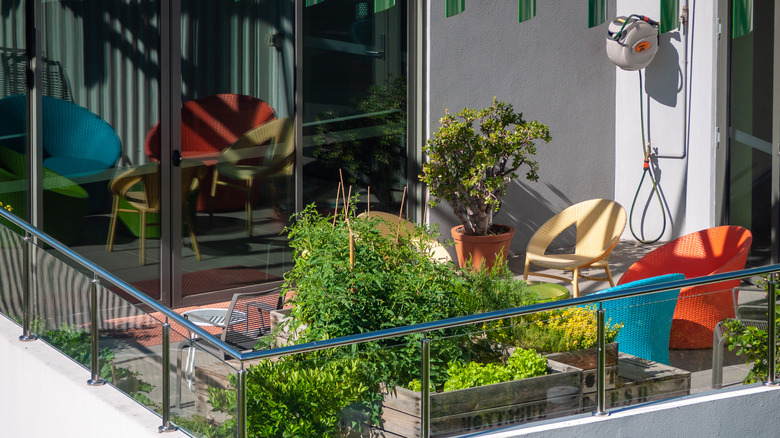How To Create An Herb Garden On Your Patio
Some people garden for relaxation. Some enjoy the DIY experience of being an at-home florist who conjures beautiful blooms from nothing but seed. Others were raised with gardening as a family tradition and want to keep their skills sharp with the hope of passing their love of plants on to their children. But many favor gardening purely as a practical matter. They take a certain satisfaction in growing the food that will one day end up on a plate before them.
While growing a vegetable garden can be an involved process requiring both time and attention, growing herbs is an easy way to scratch that itch without taking up an inordinate amount of spare time — or space. Some herbs are astonishingly easy. Many can be quite forgiving when it comes to the amount of light they need, which is ideal for apartment living.
The best news is that when you're done, you'll also have fresh, tasty additions for meals and drinks. And you'll know exactly what went into the flavors you're enjoying because you grew every single ingredient yourself. Trust the folks at Balcony Boss who will tell you: There's no mistaking fresh herbs for the ones sitting on a shelf in a jar for months, if not longer.
How to start an herb garden
Every step of gardening in a dedicated space has different requirements and challenges, so start with an inventory of what's available. How much space have you allotted for the garden you envision? If you're working on a balcony rather than a patio, how much weight will it bear, and do you have the ability (and permission) to hang pots from above? How much light and heat does the space get, and during which times of the day? The experts at Apartment Guide say that for the best results, your patio or balcony needs between four and six hours of direct sunlight. You'll want to be mindful in an urban environment of other buildings that may cast shadows on your garden during certain periods of the day.
Next, decide whether you're going to begin with seeds or starter plants. Seeding is certainly more DIY intensive, and just like making fresh pasta from scratch, growing from seed will give you well-earned bragging rights. If that merit badge isn't important to you, starter plants and cuttings are considerably easier to start with. Are you looking to garden as a seasonal activity, or year-round, and will the weather cooperate with your wishes? Because if not, you're going to need containers you can move indoors when the weather becomes inclement outside.
What you'll need to grow an herb garden
It's important to note that unlike vegetables and flowers, some herbs can be grown in spaces as small as a soda bottle. Not only that, according to Air Tasker, you can set up an herb garden in under an hour and quickly begin enjoying the results of your labor. Seeds can become herb-producing plants in as little as three weeks, while cuttings can make your wait even shorter.
Once you've selected a space and made sure you have a way to effectively water your plants (containers with holes set into pans are always recommended), then it's time to shop for seeds or cuttings. When it comes to what grows well in a garden like yours, the pickings are — pardon the pun — plentiful. And unlike those expensive garnishes and ingredients you buy in tiny quantities at the supermarket but still seem to spoil before you can use them entirely, you'll get to pick these herbs fresh from your garden with a gentle tug or a snip of the scissors.
Among the most popular herbs to grow are chives, basil, oregano, parsley, sage, rosemary, and mint. Cilantro, fennel, and lavender are favorites as well. Bear in mind that some plants will require gradual exposure to the outdoors in order to harden off, so you'll need to start those inside. There's another great reason to work from cuttings, because it shortens the time your plants will be indoor housemates.
Patio herb garden tips
Watering will keep you on your toes. Each plant requires some, but they won't all require the same amount. There are any number of places where you can find out just how much water your chosen plants need. Instructions are typically included with starter plants, almost always with seeds, and if all else fails, the internet can guide you as well. There is one caveat. Gardeners at the LA Times explain that potted plants dry out faster than those in the ground, so make sure your watering routine takes that into account.
Another tip is to avoid planting dissimilar plants together. If you put taller herbs like oregano and sage next to lower growing ones like marjoram and basil, the larger ones may endanger their smaller competitors by blocking too much sun. To take best advantage of light during the day, gardens should ideally face southwest or southeast. Planting herbs in the shade weakens them as they strain to get more sunshine.
The best advice is to check your garden as you start your morning. Just by poking a finger into the soil, you can tell if your plant needs water. If your finger comes back clean and dry, chances are your plant is thirsty. If there's standing water where your plant has drained, that's a tell, too. Pour that water out, or risk drowning your plant. Since these are among the most fragrant plants on Earth, it's a great way to begin your day.




